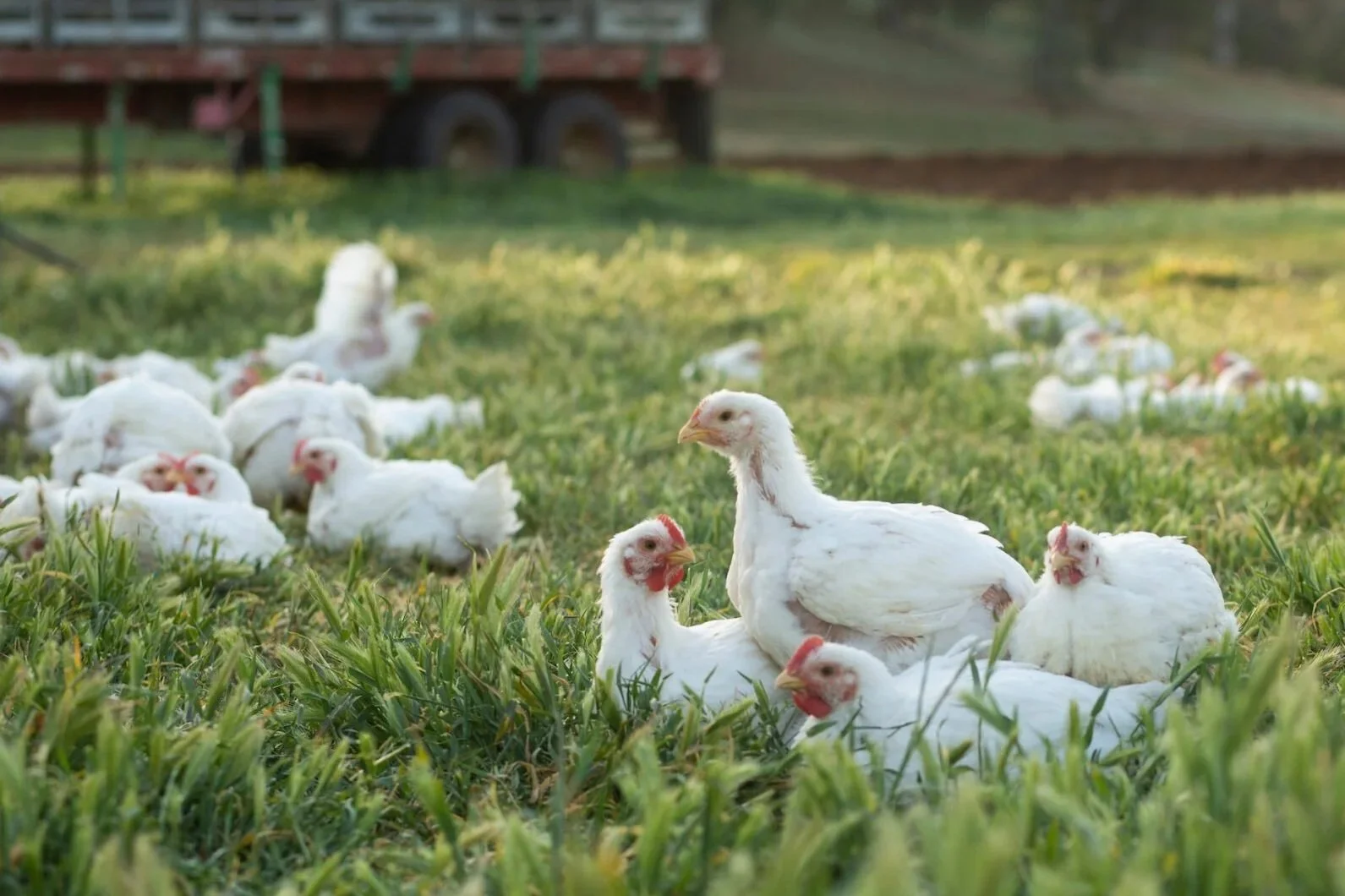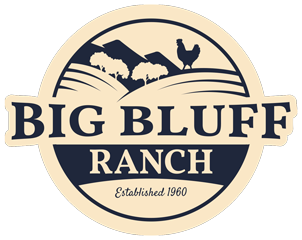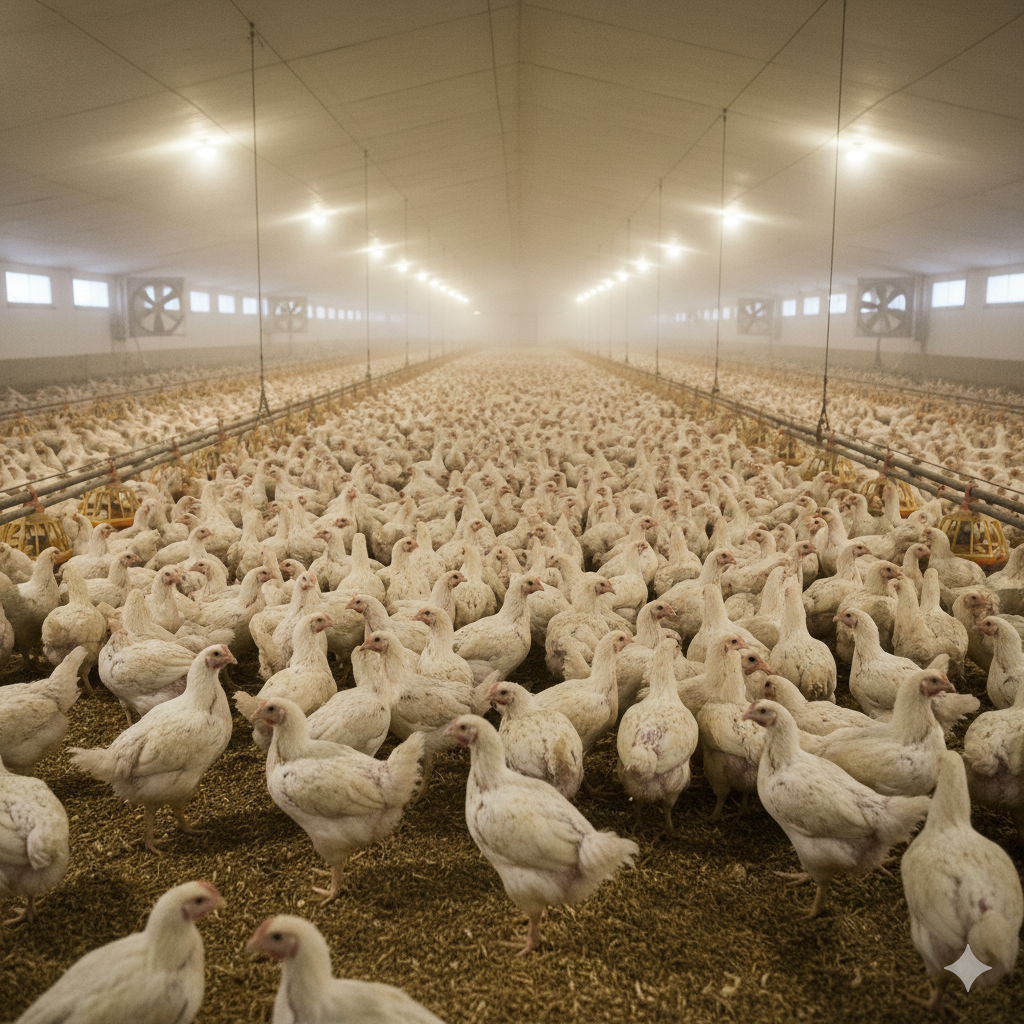
The Complete Guide to Organic Chicken: What It Is, What It Isn't, and Why It's Still Not Enough
"After fifteen years raising certified-organic birds, here's what I've learned: organic is the floor, not the ceiling. It's better than conventional—but it's not everything you've been told." – Tyler
You've been told that organic chicken means better — cleaner, kinder, healthier.
And it does mean something.
It means the feed was free of chemicals, the birds weren't dosed with antibiotics, and someone cared enough to follow stricter rules. These are good things.
But here's the truth I've learned after fifteen years raising chicken on the ranch: organic doesn't say a word about soil, sunlight, or life in the pasture. It says nothing about whether those chickens ever felt the sun on their backs or scratched in real dirt.
Organic is the baseline for doing things right. It's where good ranching starts — not where it ends.
So let's dig into what organic actually means, why it matters, where it falls short, and what comes next when you care about more than a label. At Big Bluff Ranch, we're both certified organic and certified regenerative, and I want you to understand why that second word makes all the difference.
Organic vs. Regenerative Chicken: What Really Changes
| What Matters | Conventional | Organic | Regenerative (Big Bluff Ranch) |
|---|---|---|---|
| Feed | Corn/soy (GMO allowed, synthetic pesticides used) | Certified organic feed (no GMO, no synthetic pesticides) | Wheat + canola seed meal (no corn, no soy—the most climate-appropriate feed for California) |
| Antibiotics | Allowed routinely, even in healthy birds | Completely prohibited | Never used |
| Growth Hormones | Illegal since 1950s (all U.S. chicken) | Illegal since 1950s (label is redundant) | Illegal for all U.S. chicken—but we grow birds 8-9 weeks vs 6 weeks conventional |
| Outdoor Access | None required (birds live entirely indoors) | Required but loosely defined (min 2 sq ft—often concrete) | 100 sq ft minimum per bird—but in reality, they have acres of access the way we do it |
| Indoor Space | Less than 1 sq ft per bird | 1.5 sq ft minimum per bird | Shelter available, but birds spend 90% of their time outdoors |
| What They Eat | 100% corn/soy grain ration | 100% organic corn/soy grain ration | Wheat/canola seed meal grain PLUS bugs, grass, seeds from daily foraging |
| Processing | Chlorine wash common, water-chilled (absorbs 30% water) | Organic facility required (chlorine prohibited, but water-chilling common) | Air-chilled in small-batch facility (no water absorption, crisper texture) |
| Freezing | May sit in processing for days | Processed in certified facility (timeline varies) | Flash-frozen within 2 hours of harvest |
| Environmental Impact | Soil degradation, water pollution, antibiotic resistance | Neutral to slightly positive (depends on practices) | Measurable regeneration: 2 miles creek restored, 200% increase in native plants |
| Transparency | No third-party verification required | Third-party certified (CCOF, Oregon Tilth, etc.) | Certified organic (CCOF) + Certified regenerative (Regenified)—both third-party verified |
| Price (per lb) | $3-5 | $8-12 | $18-25 |
It helps to see it side by side.
Here’s how the three main approaches—conventional, organic, and regenerative—compare across the things that matter most.
We’re proud to be on the far right of this chart. That’s where food starts working for the land instead of against it.
The difference isn’t just paperwork.
Conventional focuses on cost and speed.
Organic focuses on rules and restrictions.
Regenerative focuses on outcomes—healthier soil, healthier birds, healthier people.
Every row in that chart represents a decision we make every day at Big Bluff Ranch.
Feed grown for our climate. Acres of real pasture. Air-chilled processing that protects texture and flavor. And a measurable increase in biodiversity right here in our creeks and fields.
That’s what beyond organic really means.

So What Does This Actually Mean?
The table shows the differences on paper. Here's what they mean in reality.
Conventional chicken focuses on cost and speed. Get birds to market weight as fast as possible using whatever inputs are cheapest. The result? Bland, waterlogged meat that's nutritionally inferior and environmentally destructive.
Organic chicken focuses on removing the worst practices. No antibiotics, no synthetic pesticides, no GMOs. That's significant—but it doesn't guarantee pasture access, optimal animal welfare, or land regeneration.
Regenerative chicken focuses on outcomes. Healthier soil. Healthier birds. Healthier people. Every decision we make at Big Bluff Ranch—from what the birds eat to how we process them—is measured by whether the land gets better or worse.
The difference between organic and regenerative isn't just about labels. It's about flavor, texture, and land that actually improves instead of degrades.
That's what beyond organic means.
Commonly Asked Questions about Organic Chicken
-
Yes—if you want to avoid antibiotics, synthetic pesticides, and GMOs. The price difference pays for cleaner inputs and stricter standards.
But organic alone isn't enough. Look for pasture-raised and regenerative certification for the full benefit—better animal welfare, measurable land improvement, and superior flavor.
-
Usually, yes—especially if the organic chicken is also pasture-raised and air-chilled.
Conventional chicken is often bland and watery because it's chlorine-washed and water-chilled (absorbing up to 30% added water). Pasture-raised, air-chilled chicken has richer flavor, firmer texture, and skin that actually crisps when you cook it.
-
Very little. The USDA definition only requires "access" to the outdoors—which can mean a small door in a barn that's rarely opened, a concrete pad, or just 5 minutes per day outside.
Free range is not the same as pasture-raised. At Big Bluff Ranch, our birds have 100 square feet minimum per bird and spend 90% of their time on actual pasture.
-
Yes. Growth hormones have been illegal in all U.S. poultry production since the 1950s. Any label saying "no hormones added" is stating something already required by law.
What matters more: how fast the birds are grown (conventional: 6 weeks, Big Bluff Ranch: 8-9 weeks) and what they're fed.
-
Item descripThe USDA says yes. The European Union says no (banned since 1997).
The real question isn't whether chlorine itself is harmful—it's why the chicken needs chemical sanitization in the first place. If baseline hygiene practices were strong enough, chlorine wouldn't be necessary.tion
-
ItemOrganic = certified inputs (no antibiotics, no synthetic pesticides, organic feed)
Regenerative = measured outcomes (soil health improves, water cycles restore, biodiversity increases)
Organic tells you what was avoided. Regenerative tells you what was built.
Big Bluff Ranch is both: certified organic inputs + measurable regenerative outcomes. description
-
Because it costs more to produce. Organic feed is 2-3x the price of conventional feed. Organic birds grow slower (less throughput). Processing standards are stricter.
You're paying for what's NOT in the chicken: no antibiotics, no synthetic chemicals, no GMOs, no shortcuts.
-
Yes—and that's a good thing. Vaccines prevent viral diseases and are allowed in organic production.
Vaccines are not the same as antibiotics. Antibiotics treat bacterial infections (prohibited in organic). Vaccines prevent viral diseases (necessary for flock health).
You Made It This Far. That Means Something.
Most people don't read this deep into a page about chicken.
But you did.
That tells me you're not just shopping—you're looking for something you can actually trust.
Here's what I know after 15 years: you can read about regenerative ranching all day, you can study the certifications, compare the tables, analyze the FAQ.
But none of it matters until you taste it.
That's why the First Step Box exists. Not to convince you with more words—to prove it with food.
Two birds. Four meals. Seven days to decide.
Either I'm right and this is the best chicken you've ever had, or you get your money back and free chicken.
I'm betting the ranch on it.
Your move.
Order by Sunday Night,
Eat like this by Wednesday
Two Whole Birds
- all you need to feast like this
Try it risk-free - if you don’t love it, I’ll refund and you keep the chicken.


